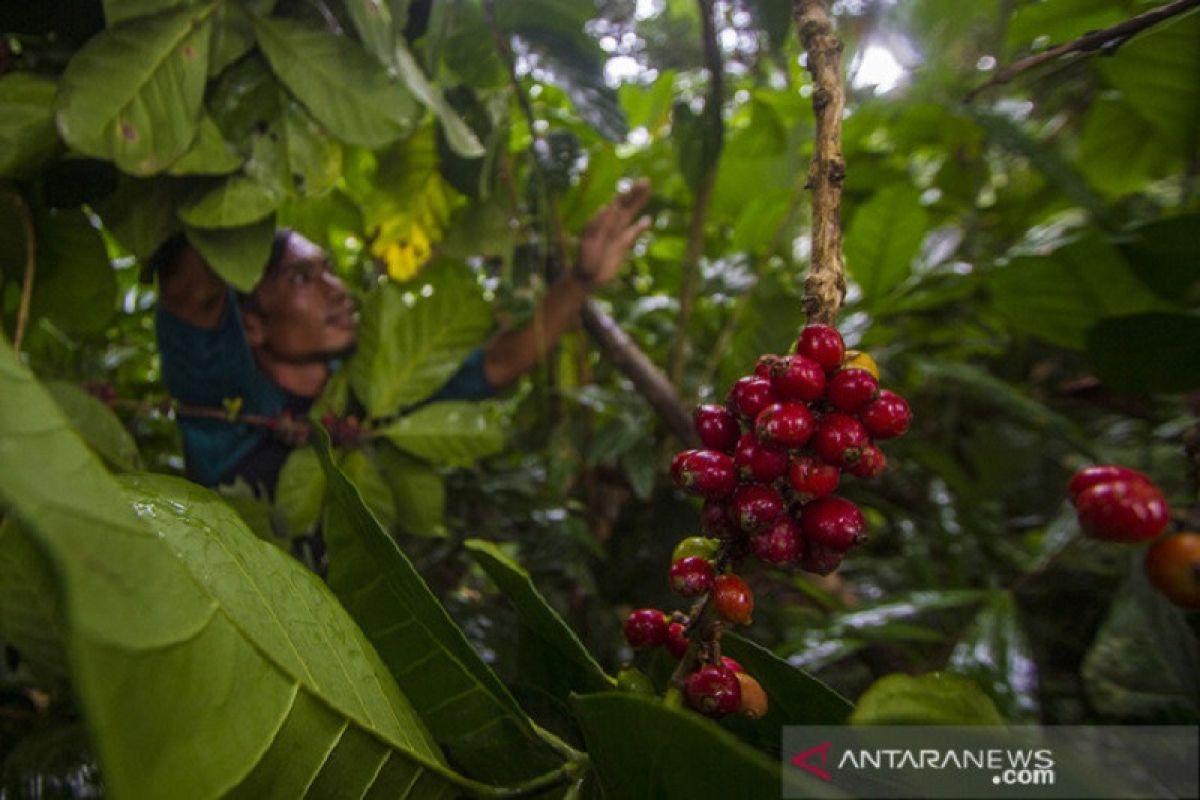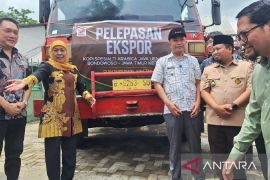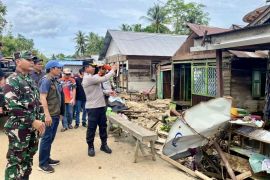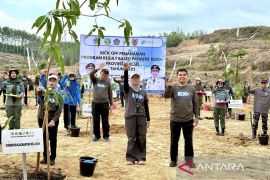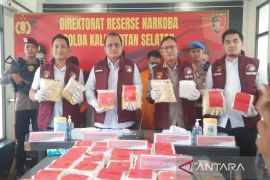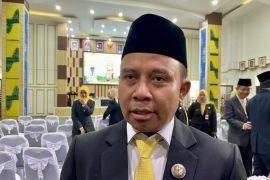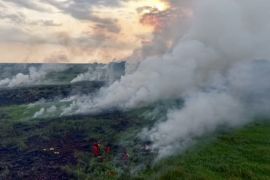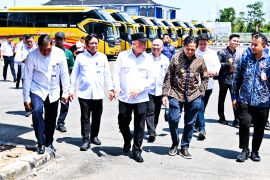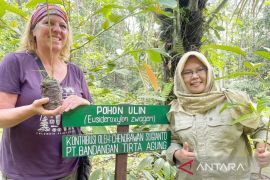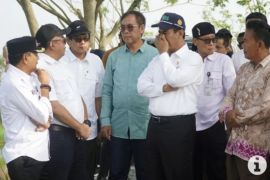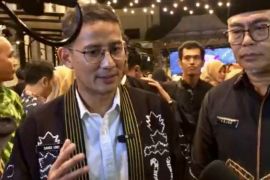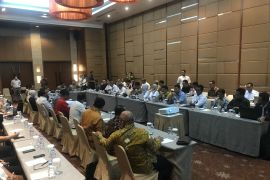Until now, coffee plantation, under the SPI guidance, had only covered 198 hectares of area across South Kalimantan. Production is still low, at 15-17 tons per month, of robusta, arabica, liberica and excelsa, among othersBanjarmasin, S Kalimantan (ANTARA) - The Javanese calls it "jackfruit coffee" for its jackfruit aftertaste, and it is less sour than arabica, albeit stronger than robusta, with a sweet, cocoa flavor.
Liberica coffee, which originated in Liberia, West Africa, might not be as popular as arabica and robusta, although it was introduced in Indonesia earlier than robusta.
"For us, this coffee is a black diamond, that is planted, not mined," chief of the Indonesian Farmers Union (SPI) of the South Kalimantan branch Dwi Putra Kurniawan stated.
It is not for nothing that the local farmers called it the black diamond.
Unlike arabica and robusta that grow on dryland, liberica, which is also called peatland coffee, can grow well in a peatland area.
Apart from its economic potential, liberica planting can encourage preservation and restoration of peatlands.
Due to its limited planting area, liberica coffee has the potential to become South Kalimantan's top commodity, Kurniawan noted.
Related news: PTPN XII specialty coffee popular in European, US markets
"Liberica coffee has a huge market potential, especially in the export market. In every exhibition we took part, there was demand for liberica coffee," he pointed out.
In 2019, South Kalimantan's SPI showcased this coffee at the Helsinki Coffee Festival in Finland and received positive response from the market.
It has a good market in Japan, Malaysia and Singapore, he stated.
Unfortunately, members of South Kalimantan's SPI could not meet the demand, as production is still low.
"Qatar has requested two tons of coffee per month, but our production has only reached 300-500 kg per month," he noted.
Related news: Indonesian coffee draws praises from Singaporean Coffee Association
Head of the Environment Office of South Kalimantan Hanifah Dwi Nirwana remarked that the coffee planting movement in the province would be the right move for preserving peatlands.
"This is not just coffee. This is peatland coffee, which not only offers economic benefits to the public but is also beneficial for peatland revitalization," Hanifah remarked.
Hanifah spoke of having urged the Peatland Restoration Agency (BRG) to provide funding for liberica coffee planting under the peatland revitalization program in South Kalimantan.
Coffee would proffer direct benefits to farmers, as they can manage the commodity, right from its planting to roasting and grinding.
Related news: Indonesia exports coffee worth US$1.2 million to Egypt
Land availability
Unlike arabica and robusta, liberica coffee trees could reach a height of up to nine meters.
It has a larger bean, twice as compared to the arabica bean. The unique fact is that its leaf contains a higher caffeine content than its bean.
Farmers can get 25 to 30 kilograms of coffee cherries from one liberica tree. In one hectare of land, farmers can plant 800 to one thousand trees.
Land availability poses the main hindrance to the development of coffee plantations in South Kalimantan, Kurniawan pointed out.
Currently, the SPI has worked closely with farmers to plant coffee in their abandoned land. The farmers' union will provide free seeds and training.
"Until now, coffee plantation, under the SPI guidance, had only covered 198 hectares of area across South Kalimantan. Production is still low, at 15-17 tons per month, of robusta, arabica, liberica and excelsa, among others," he noted.
Related news: Aceh govt proclaims support for development of Gayo arabica coffee
In Central Hulu Sungai District, farmers are ready to plant coffee in customary forests.
The district has planned to develop coffee plantations and release its own coffee brand covering all four types of coffee -- robusta, arabika, liberica, and excelsa -- with its geographical advantage of highland and peatland areas.
Kurniawan expressed hope that the government would include coffee planting in its social forestry program on account of the commodity's economic potential.
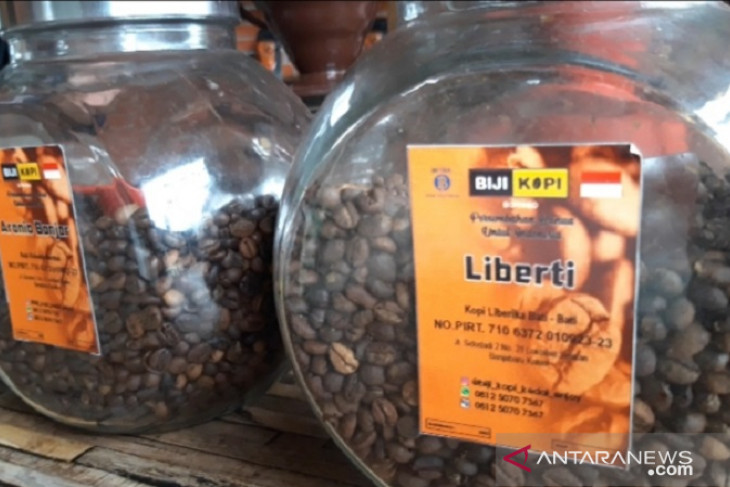
Liberica coffee was first introduced in Indonesia during the Dutch colonial era in 1878 to replace Arabica coffee plants that got plagued with the coffee rust disease.
Almost all coffee plantations in the lowland area were affected by the disease.
The Dutch government was desperate, as at the time, the Dutch East India Company (VOC) dominated almost three-quarters of the world's coffee trading, half of it sourced from Java coffee.
In order to maintain its coffee business, the Dutch introduced liberica coffee that was claimed to be more resistant to the coffee rust disease.
Liberica soon became popular to replace arabica. It was also sold at a good price in the European market.
Related news: Bondowoso coffee draws European interest as export potential explored
Until 1888, liberica trees were planted in coffee plantations in six regions in Java Island, including in Pasuruan, Probolinggo, Madiun, Besuki, Priangan, Tegal, and also in Lampung, Sumatra.
However, liberica trees too were struck by the coffee rust disease. In 1907, the Dutch brought robusta, which was more resistant to the plant disease, to Indonesia.
Until now, over 70 percent of the coffee plantations in Indonesia are robusta, while liberica only covers less than one percent of the coffee plantations in the country.
Currently, liberica coffee can be found in peatland areas in the east coast of Sumatra in Jambi, Riau Island, Meranti Islands. Outside those areas, liberica was also planted in the peatland area in Kalimantan Island.
Related news: Traditional fabric can help economy weave success
Related news: Goa Rangko's sunlit charm
Editor: Fardah Assegaf
Copyright © ANTARA 2021
